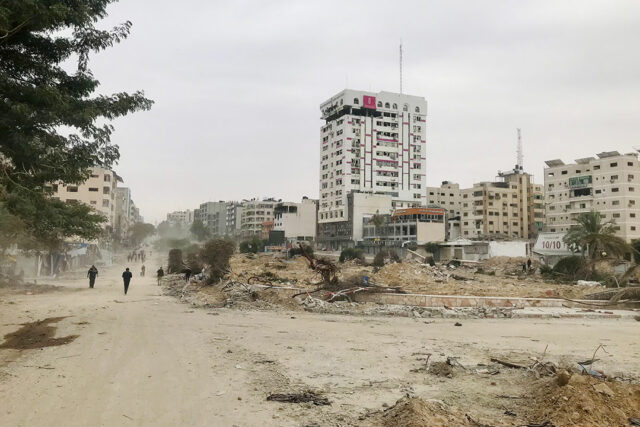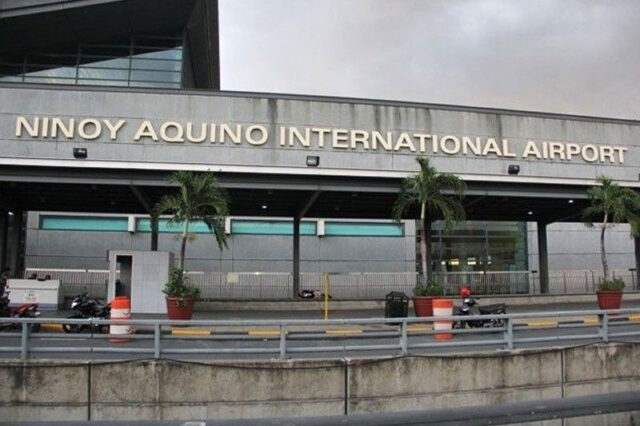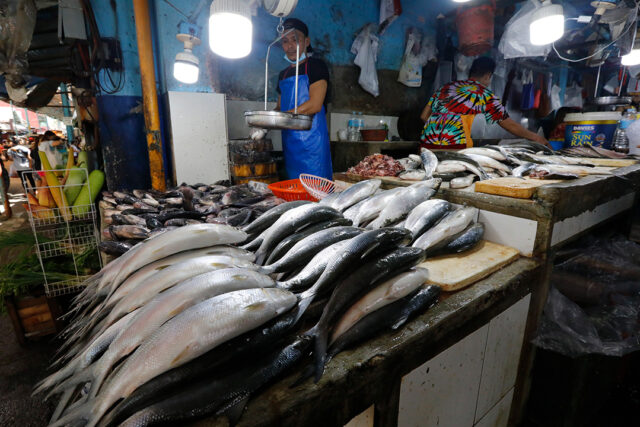Pioneering the new standard for wearable health and connectivity solutions, Huawei is proud to announce the launch of the HUAWEI WATCH 4, a groundbreaking smartwatch device that takes health monitoring, sports, and lifestyle technology into a new arena with eSim technology that can operate independently even without being tethered to a phone. It is set to create the ultimate personal companion on your wrist available starting this Feb. 23.
Your complete personal health companion complete with health monitoring capabilities
The HUAWEI WATCH 4 offers comprehensive health monitoring capabilities, including ECG analysis and PPG arrhythmia analysis for continuous A-fib and premature beats screening.
It is the only smartwatch equipped with a high-performance ECG sensor module, keeping track of cardiac rhythm, atrial fibrillation, and premature atrial contractions, providing users with timely alerts of major heart health-related risks. Additionally, the watch features arterial stiffness detection, enabling pro-level screening for arteriosclerosis and offering tips to improve cardiovascular health.
The HUAWEI WATCH 4 also introduces the first-ever Respiratory Spectrum Analysis algorithm, allowing users to monitor respiratory health based on cough patterns. With this innovative feature, users can detect early signs of lung function impairment.
With its 8-channel optical heart rate sensor featuring TruSeen™ 5.0+ heart rate monitoring and advanced sleep monitoring with HUAWEI TruSleep™ 3.0, which detects the user’s duration of sleep and present the comprehensive sleep structure of sleep and naps, it can accurately report sleep and wake patterns that can go with your alarm. The feature also includes analysis of light sleep, deep sleep, REM sleep, and awake hours.
Access in real-time your health insights to stay on top of your game

The One-Click Health Glance function provides users with easy-to-understand health reports, measuring seven different health indicators all at once. By utilizing quick multiple health indicators, users can assess various health data items simultaneously, including ECG, heart rate, SpO2, arterial stiffness, stress levels, skin temperature, and respiratory check. The entire process takes just 60 seconds, generating a micro-physical examination report for users to reference and share.
To truly push the limits of smart technology, The HUAWEI WATCH 4 supports Health Trends, allowing users to track medium and long-term changes in various health indicators, such as sleep duration, stress levels, resting heart rate, and blood oxygen. This feature enables users to develop healthier lifestyles by providing personalized insight, and through the Health Community function, users can connect with family members and friends to share health updates and receive alerts regarding abnormal readings.
Inspired design, better experience: Everything in one smartwatch
Users can now enjoy standalone functionality on their smartwatches, allowing them to receive calls, texts, and access apps even when their smartphones are out of reach. With HUAWEI WATCH 4’s fresh UX design in a magazine-style layout, users get an easier viewing of data and active apps, with an upgraded eSIM for independent calls and messaging. — no need to bring phone all the time
The Independent eSIM feature on the HUAWEI WATCH 4 liberates users from the constraints of their smartphones, offering unparalleled freedom and connectivity. Whether you’re on a run, at the gym, or simply on the go, you can stay connected and accessible at all times, ensuring that you never miss an important call or message again.
In addition to its standalone functionality, the HUAWEI WATCH 4 also boasts seamless integration with a variety of popular apps, including Spotify, GCash, Strava, WISH FM, Adidas Running and more. With Spotify, users can enjoy their favorite podcasts and music tracks directly from their wrist, while Strava provides comprehensive tracking and analysis for running and other exercises, empowering users to achieve their fitness goals with ease. Potential consumers can expect to explore safe and secure ways to pay with their HUAWEI WATCH 4 using GCash QRs in the near future.
Furthermore, the HUAWEI WATCH 4 offers an intelligent and intuitive user experience, compatible with both iOS and Android devices. Its fresh new interactions, including open apps and quick bar access based on users’ habits, ensure a seamless and personalized experience for every user.
Enhance your fitness routine with a selection of more than 100 sports modes
With over 100 different sports modes, including running, cycling, swimming, and golf, the HUAWEI WATCH 4 provides professional sports assessments and suggestions to help users better understand the effects of exercise. The watch offers personalized training plans based on users’ physical conditions and running history, empowering them to maintain a healthy lifestyle and improve their athletic performance.
The upgraded Activity Rings function visualizes users’ exercise goals and progress, providing recommendations based on age, gender, weight, and height. The function also summarizes weekly achievements and recommends new goals, encouraging users to develop healthy exercise habits.
Cutting-edge design aesthetics that provide an enhanced user experience

HUAWEI WATCH 4 features a touch of elegance and durability to withstand daily wear. HUAWEI WATCH 4 comes with Black Stainless Steel Case design, with 3D curved glass that brings streamlined aesthetics for a futuristic style.
With tactile feedback and enhanced responsiveness, the rotatable crown offers users an interactive touch experience like never before, allowing seamless navigation and control of various functions with ease.
Crafted with precision and attention to detail, the HUAWEI WATCH 4 features a slim and lightweight design, providing users with ultimate comfort and style. Additionally, the offers a variety of themed watch faces, catering to different preferences and lifestyles.
The HUAWEI WATCH 4 also introduces new smart interactions for a smarter experience, including the HUAWEI Assistant TODAY function, Service Widgets, and seamless communication capabilities. With an ultra-smooth user experience, enhanced sensitivity, and quick application launch, the HUAWEI WATCH 4 redefines convenience and efficiency in smartwatch technology.
Powered by the intelligent dual-core architecture 2.0, the HUAWEI WATCH 4 delivers a seamless and powerful user experience while minimizing power consumption. With the dual mode for strong performance and long-lasting battery life, users can enjoy up to 14 days of battery life in Ultra-Long Battery Life mode, ensuring worry-free usage during long trips.
The watch supports wireless SuperCharge, providing users a convenient and fast-charging experience. Equipped with a multi-dimensional heat dissipation system, the HUAWEI WATCH 4 ensures optimal comfort and performance even during intensive activities.
Pricing and Availability
The HUAWEI WATCH 4 will be available starting February 23 for its first sales price of P22,999 with a free HUAWEI Sound Joy speaker worth P6,999.
Get yours at any HUAWEI store nationwide or through Huawei’s official website. To learn more about the HUAWEI WATCH 4 and other HUAWEI products, visit their website or social media accounts (Facebook | Instagram).
Spotlight is BusinessWorld’s sponsored section that allows advertisers to amplify their brand and connect with BusinessWorld’s audience by enabling them to publish their stories directly on the BusinessWorld website. For more information, send an email to online@bworldonline.com.
Join us on Viber at https://bit.ly/3hv6bLA to get more updates and subscribe to BusinessWorld’s titles and get exclusive content through www.bworld-x.com.







 Aimed at providing unique and memorable experiences, Okada Manila’s Thrillscape aims to revolutionize the concept of leisure and fitness. With the tagline “Masters of Skill, Experts of Fun,” Thrillscape is more than an obstacle course; it is a dynamic interactive tag arena where individuals who are at least 4 feet in height can test their agility, push their limits, and challenge themselves to take on a new adventure.
Aimed at providing unique and memorable experiences, Okada Manila’s Thrillscape aims to revolutionize the concept of leisure and fitness. With the tagline “Masters of Skill, Experts of Fun,” Thrillscape is more than an obstacle course; it is a dynamic interactive tag arena where individuals who are at least 4 feet in height can test their agility, push their limits, and challenge themselves to take on a new adventure. “Thrillscape bridges the gap in entertainment offerings for young teens and adults, providing a lively, engaging space that encourages physical activity, teamwork, and sheer enjoyment,” said Vikki Aquino, Director of Spas, Recreation & Kids Club at Okada Manila.
“Thrillscape bridges the gap in entertainment offerings for young teens and adults, providing a lively, engaging space that encourages physical activity, teamwork, and sheer enjoyment,” said Vikki Aquino, Director of Spas, Recreation & Kids Club at Okada Manila. The obstacle course is vast and varied, capable of accommodating up to 120 guests simultaneously. With over 30 engaging obstacles, participants can navigate through the different challenges, accumulate points, and experience an exhilarating activity. The obstacle course is designed to be an inclusive space, welcoming individuals of various fitness levels, including aspiring athletes, people looking for adventure, foster bonds, and those seeking a fun way to stay active. “Our athletic coaches are here to guide participants through each challenge, ensuring an exciting, safe, and rewarding adventure. This is not just for individuals but would also be a wonderful group activity among friends and colleagues, and even families,” Ms. Aquino added.
The obstacle course is vast and varied, capable of accommodating up to 120 guests simultaneously. With over 30 engaging obstacles, participants can navigate through the different challenges, accumulate points, and experience an exhilarating activity. The obstacle course is designed to be an inclusive space, welcoming individuals of various fitness levels, including aspiring athletes, people looking for adventure, foster bonds, and those seeking a fun way to stay active. “Our athletic coaches are here to guide participants through each challenge, ensuring an exciting, safe, and rewarding adventure. This is not just for individuals but would also be a wonderful group activity among friends and colleagues, and even families,” Ms. Aquino added. Thrillscape is located at the ground floor of Okada Manila’s Coral Wing, Crystal Corridor. The course is open on Mondays to Thursdays from 12 nn. to 8 p.m. and Friday through Sunday from 10 a.m. to 10 p.m. Packages start at P499 inclusive of a band tracker, two games, and use of lockers.
Thrillscape is located at the ground floor of Okada Manila’s Coral Wing, Crystal Corridor. The course is open on Mondays to Thursdays from 12 nn. to 8 p.m. and Friday through Sunday from 10 a.m. to 10 p.m. Packages start at P499 inclusive of a band tracker, two games, and use of lockers.






